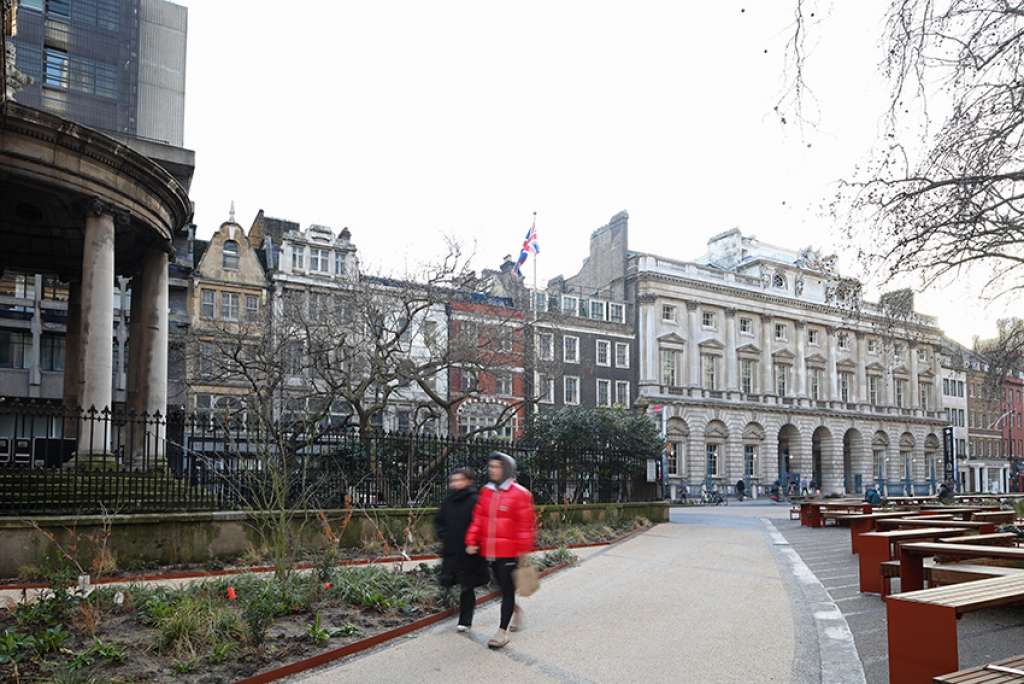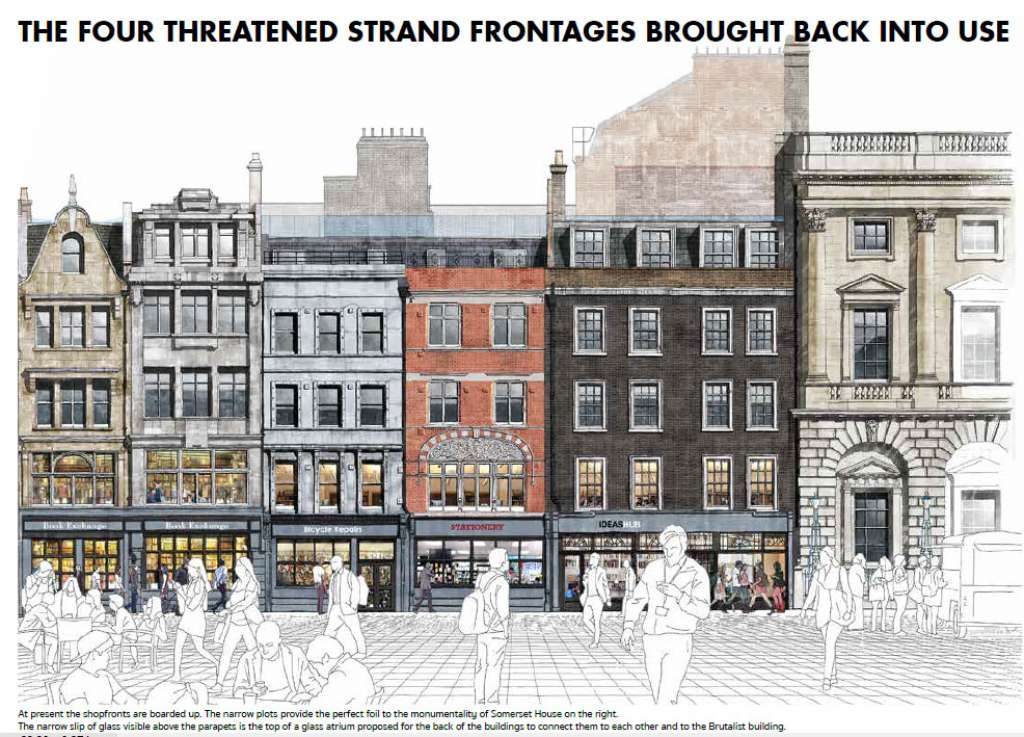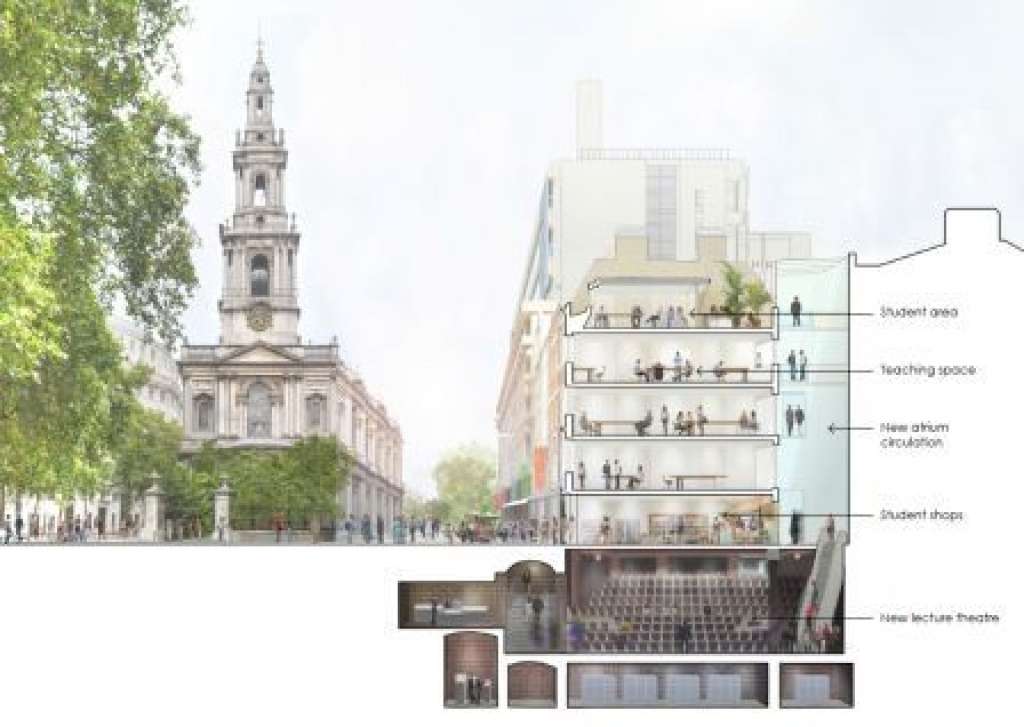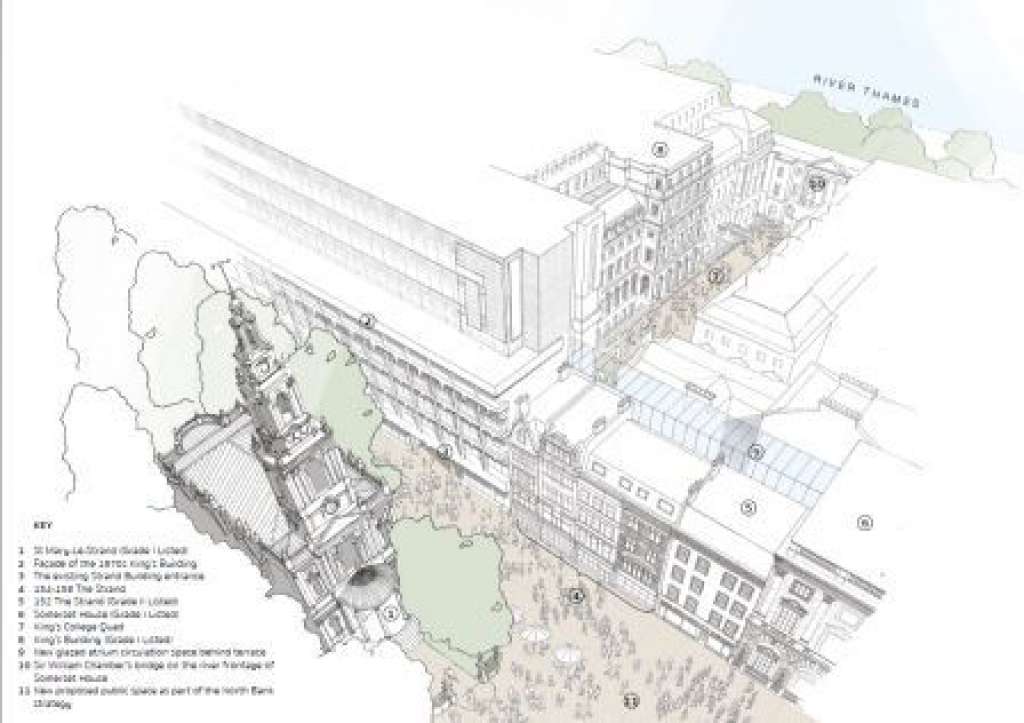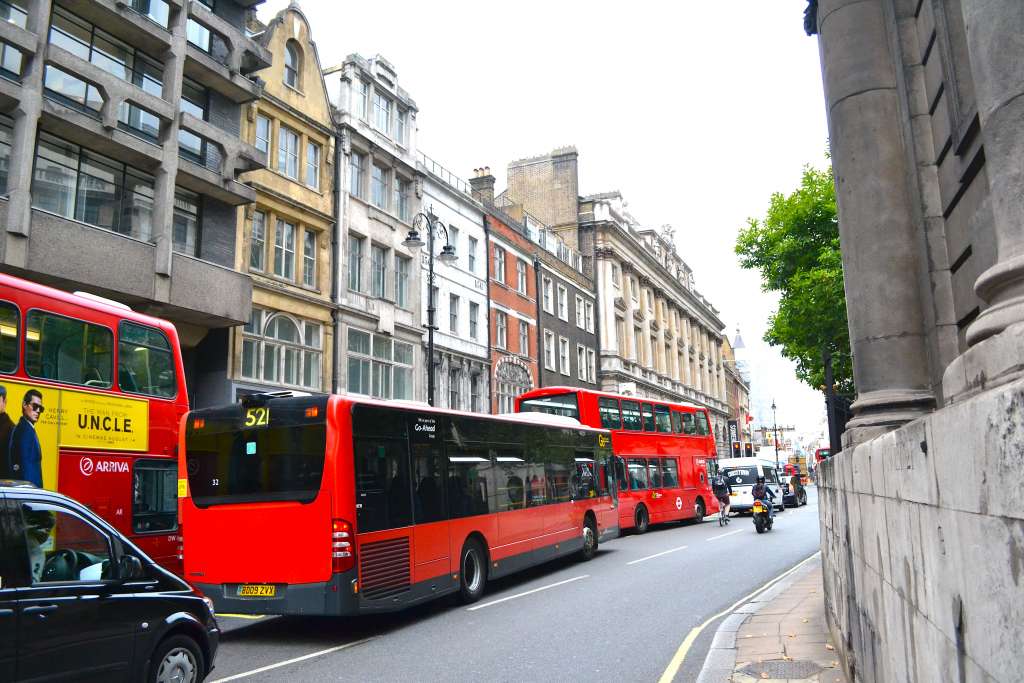PRESS RELEASE: SAVE welcomes creation of London’s newest piazza
St Mary-le-Strand set free from its traffic island to become centrepiece of spectacular new public space
Piazza creates attractive setting and new opportunities for ‘little houses on the Strand’ whose demolition SAVE successfully opposed
6th January 2023
SAVE Britain’s Heritage welcomes the spectacular new public piazza that has been created out of a notorious traffic and pollution hotspot in London’s West End.
St Mary-le-Strand, the grade I-listed Baroque church which was for years marooned on a traffic island in the middle of the Strand, has been reconnected to the pedestrian realm, allowing people to enjoy strolling between it and Somerset House for the first time in decades.
The landscaped piazza – proposed by SAVE Britain’s Heritage in 2015 – also creates an unrivalled opportunity to bring the historically important “little houses on the Strand” – which we saved – back into use, with plenty of space for cafe tables to spill into the new square.
Henrietta Billings, director of SAVE Britain’s Heritage, says: “This new piazza not only dramatically reduces the noise and pollution which has characterised this part of the Strand for so many decades, but it also showcases the beauty of St Mary’s and the Strand buildings to full effect. We look forward to King’s College seizing this opportunity and reopening the shop fronts of the Strand buildings – taking full advantage of the new public space on their doorstep."
SAVE fought a successful battle to protect this terrace of five Victorian and Georgian buildings from redevelopment in 2015. Demolition plans by King’s College unleashed a storm of public outrage and national press attention, leading to 10,000 signatures on our petition and the announcement of a public inquiry by the Secretary of State. As a result King’s withdrew their plans. Working with architect John Burrell, SAVE set out a positive vision for transforming the area, key elements of which have now been realised.
Marcus Binney, executive president of SAVE Britain’s Heritage, describes it as “the best and most enlightened example of good town planning since the creation of Covent Garden Piazza in the 1970s. As a result two of London’s finest 18th-century buildings, Somerset House and St Mary-le-Strand, now look as good as their counterparts in Rome and Paris.”
The church has already seen a spike in visitors and is launching a light and sound show on Monday January 9 to take advantage of its new accessibility.
The 7,000 sq m public space, which runs from Waterloo Bridge to Australia House - with the landscaping extending to St Clement Danes church outside the Royal Courts of Justice - is at the heart of London’s historic processional route from Westminster to the City.
Traffic has been rerouted to the north side of the Aldwych gyratory, where new pedestrian crossings make walking all the way from King’s College to the LSE or into Covent Garden an attractive option. The reclaimed public space is filled with tables, chairs, artwork and 1,370 sq m of planting including 41 trees chosen for their visual interest and impact on biodiversity.
The transformation allows some of London’s finest Georgian buildings to be fully enjoyed for the first time in more than a generation. An area that was once part of a multi-lane gyratory, characterised by traffic fumes and pedestrians hurrying along narrow pavements, is now an attractive destination for meeting, strolling and lingering over a coffee or al fresco meal.
St Mary-le-Strand church was designed by James Gibbs, architect of St Martin-in-the Fields and Oxford’s Radcliffe Camera. It opened in 1724, the first of London’s famous “50 new churches” planned to serve the rapidly growing population. Charles Dickens’ parents were married there in 1809. With its curved and coffered ceiling unparalleled in Britain it has been described by writer Simon Jenkins as “the finest 18th-century church in London”.
The opening of the piazza coincides with the news that the National Lottery Heritage Fund has awarded more than £500,000 to the church for a three-year restoration project known as the Jewel in the Strand. It will include conservation work to the sanctuary and nave, cleaning the smoke-blackened facades, adding new lighting, opening up the crypt and improving disabled access.
Canon Peter Babington, priest-in-charge at St Mary-le-Strand, said the new piazza has already prompted a significant increase in visitors to the church. He is hopeful of 50,000 visits a year, with a sound-and-light installation opening this month to celebrate the church’s history. Rev Babington said: “Bus drivers used to call St Mary-le-Strand church ‘St Mary’s in the Way’. [Now it has…] become the centrepiece of a new piazza at the heart of London.”
Background
SAVE first proposed the transformation of this area in 2015 when we successfully campaigned to stop the demolition of Nos 154-158 the Strand and the partial demolition of No 152 – five houses next to Somerset House owned by King’s College. As part of our alternative scheme drawn up by John Burrell of BFF Architects and Urban Designers, we showed the opportunity to create a magnificent new piece of public realm for the capital along this national ceremonial route between Buckingham Palace and St Paul’s Cathedral.
We suggested that the buildings – with their narrow frontages an important reminder of London’s medieval grain – could be brought back into use for teaching, with circulation space added behind and shops and cafes on the ground floor.
John Burrell, principal at BFF Architects and Urban Designers, says: “I’m so pleased that the ideas I produced working with SAVE way back in 2015 have been realised. We proposed both the restoration of the historic facades to save them from demolition and the enhancement of the ‘grey land’ around King’s College to make a new busy, active, public space – linking King’s, St Mary-le-Strand, the Courtauld and Somerset House. At that time the Strand was one of the most highly polluted traffic spots in London. Thankfully that dubious honour has now been consigned to history.”
ENDS
Notes to editors:
1/ For more information or high-res images contact Elizabeth Hopkirk: elizabeth.hopkirk@savebritainsheritage.org / 020 7253 3500
2/ To mark the opening, SAVE Britain’s Heritage commissioned photographs from Agnese Sanvito. They may be used by the media to illustrate coverage of the new piazza and SAVE’s involvement. Please credit Agnese Sanvito and SAVE Britain’s Heritage.
3/ The £22m piazza project was designed by LDA Design and developed by Westminster City Council in partnership with local stakeholders including the Northbank BID, King’s College London, the London School of Economics, Somerset House Trust, St Mary-le-Strand, the Courtauld Institute and the Society of London Theatre.
4/ For more on SAVE and John Burrell’s 2015 proposals click here
5/ For more on SAVE’s successful battle to save the Strand buildings plus information on their history click here
6/ For more on the St Mary-le-Strand Speaks sound and light show starting on 9th January click here
7/ SAVE Britain’s Heritage is an independent voice in conservation that fights for threatened historic buildings and sustainable reuses. We stand apart from other organisations by bringing together architects, engineers, planners and investors to offer viable alternative proposals. Where necessary, and with expert advice, we take legal action to prevent major and needless losses. Our success stories range from Smithfield Market in London and Wentworth Woodhouse stately home in Yorkshire, to a Lancashire bowls club and the Liverpool terraces where Ringo Starr grew up.


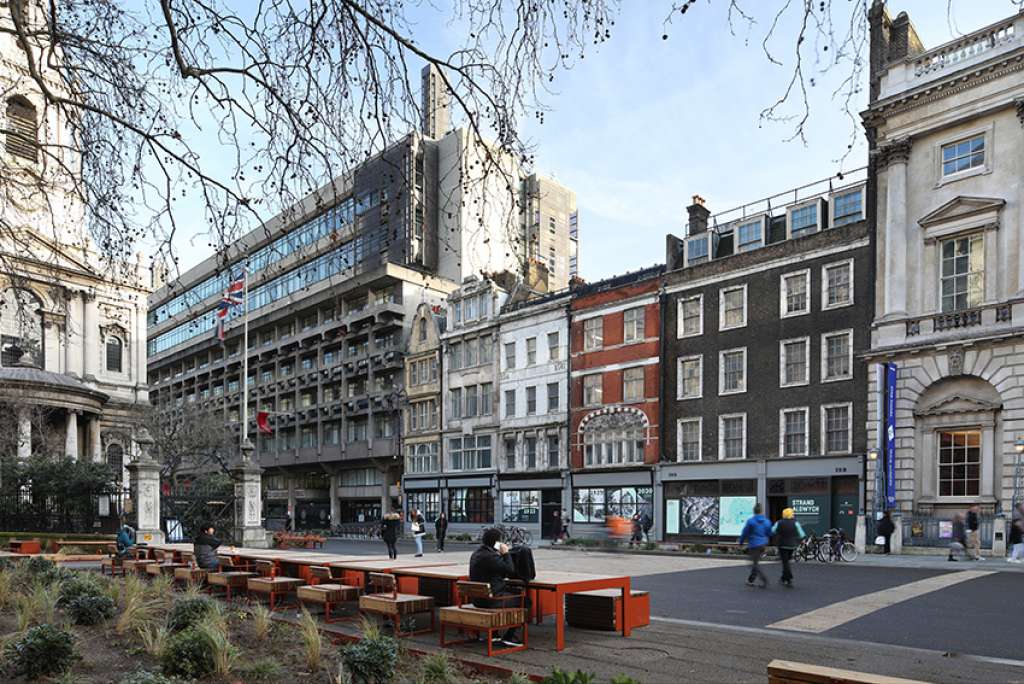
![BEFORE: St Mary-le-Strand was throttled by traffic for decades [Credit: Streetview, 2018]](/img/articles/Little_houses_in_2018_Screenshot_2022-12-22_at_16-51-27_Strand_·_London.png)
